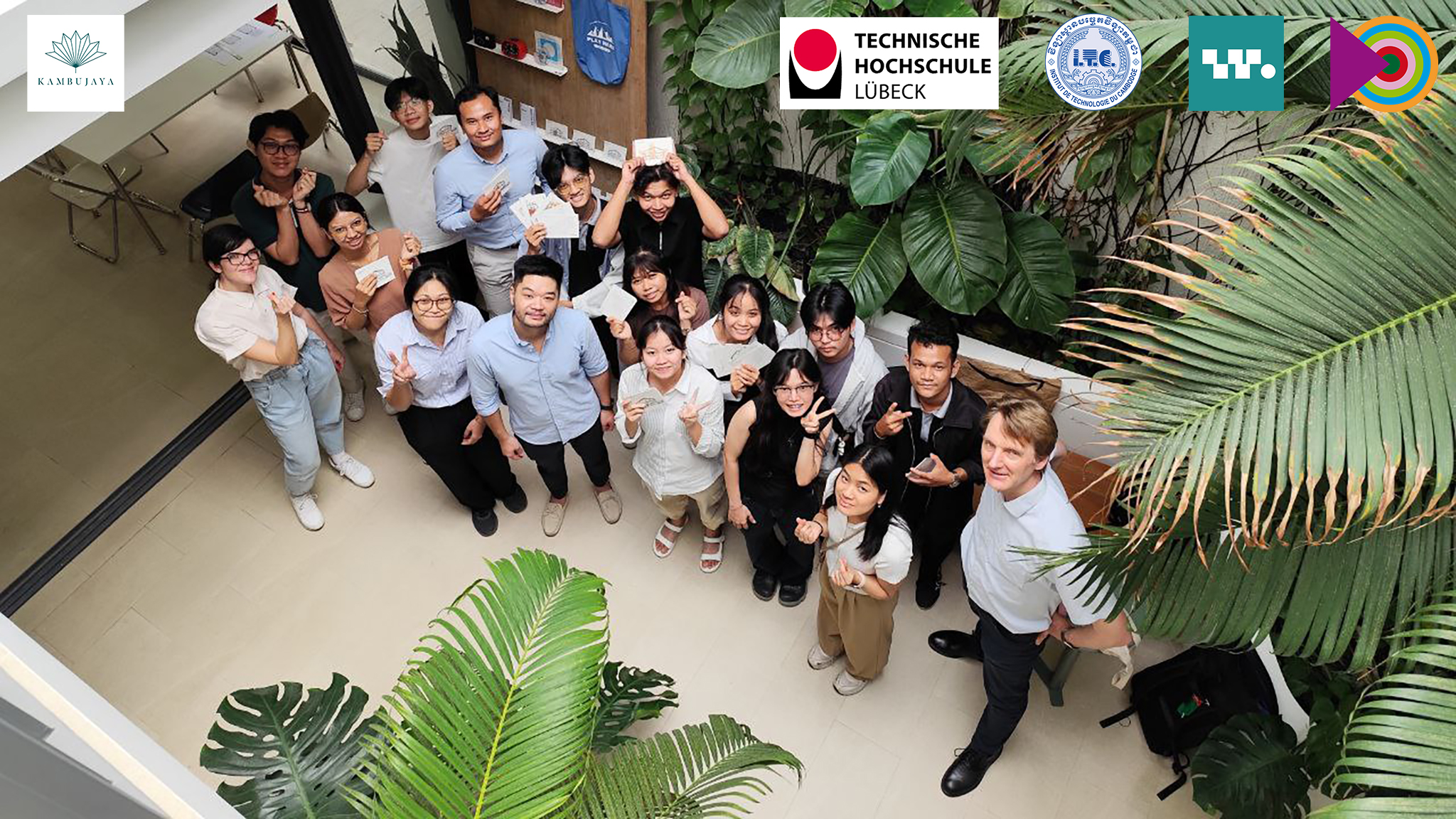On 23 February 2025, the Build4People project, represented by its Work Package “Sustainable Building”, led by Prof Dr Dirk Schwede and supported by the research associate Christina Karagianni, both from the Technical University of Applied Sciences Lübeck organized a Science Workshop together with the local housing developer Kambujaya, the local association Women in Architecture and Engineering (W.A.E.) and their local research partner, the Institute of Technology of Cambodia, at Kambujaya Residences.

This workshop focused on evaluating the sustainability of an existing shophouse in Phnom Penh from Kambujaya Residences—analyzing its energy consumption, CO₂ emissions, and social inclusivity. Through an interactive, co-design approach, the participants explored and proposed possible modifications to improve its sustainability while also generating insights for future climate-resilient and inclusive shophouse designs.

The session began with an introduction to the significance of sustainability and inclusivity in shophouse design. Experts provided insights into the architectural relevance of shophouses, their environmental impact, and the role of life cycle assessment (LCA) in measuring energy efficiency and carbon footprints. Additionally, discussions highlighted the importance of accessibility and social inclusivity, ensuring that future developments would cater to diverse communities.

Following this, participants conducted an in-depth evaluation of the Kambujaya Residences shophouse, analyzing its material choices, energy consumption, carbon emissions, and existing design strengths and weaknesses. Small group discussions allowed attendees to focus on key sustainability aspects, including material efficiency, carbon footprint reduction, accessibility improvements, and climate resilience. This collaborative analysis provided valuable insights into how such structures could be adapted to meet the challenges of modern urban living.

The workshop’s highlight was a hands-on co-design exercise, where participants worked together to propose modifications aimed at improving energy efficiency, reducing emissions, and enhancing inclusivity. They brainstormed innovative ideas and sketched design enhancements, considering principles of circular economy and adaptive reuse. This practical session enabled participants to merge academic knowledge with real-world application, fostering a deeper understanding of sustainable urban development and leading to a diverse set of solutions like:
- Replacing conventional concrete with locally sourced, low-carbon materials such as compressed earth blocks and bamboo.
- Installing solar panels on the rooftop to generate renewable energy and reduce dependency on the national grid.
- Implementing a rainwater harvesting system to reduce water consumption and integrating greywater recycling for non-potable use.
- Use of energy-efficient appliances and LED lighting throughout the building to lower overall energy consumption.
- Modifying the entrance to include a ramp and wider doorways, ensuring accessibility for individuals with disabilities.
- To foster a sense of community, they suggested the use of perforated garden walls that can create communication opportunities with the neighbors or can be covered with greener for more privacy.
- Designing an adaptable facade system with adjustable shading elements to respond to changing weather conditions.

The event concluded with a summary of key insights and takeaways, followed by discussions on how these findings could be applied to future projects. By the end of the workshop, participants had gained a clearer understanding of how to integrate sustainability and inclusivity into urban architecture, contributing to more climate-resilient and socially inclusive developments in Phnom Penh and beyond.

